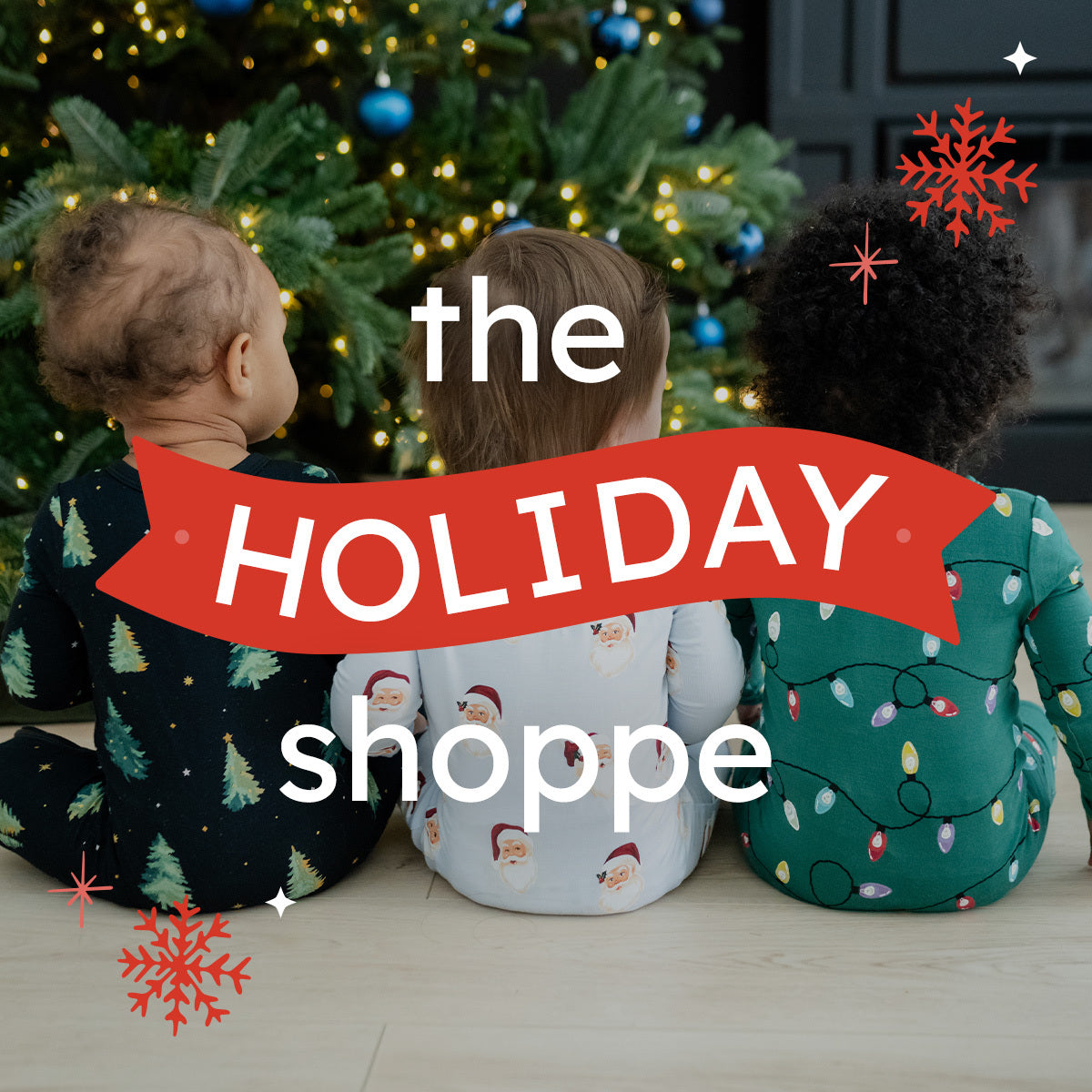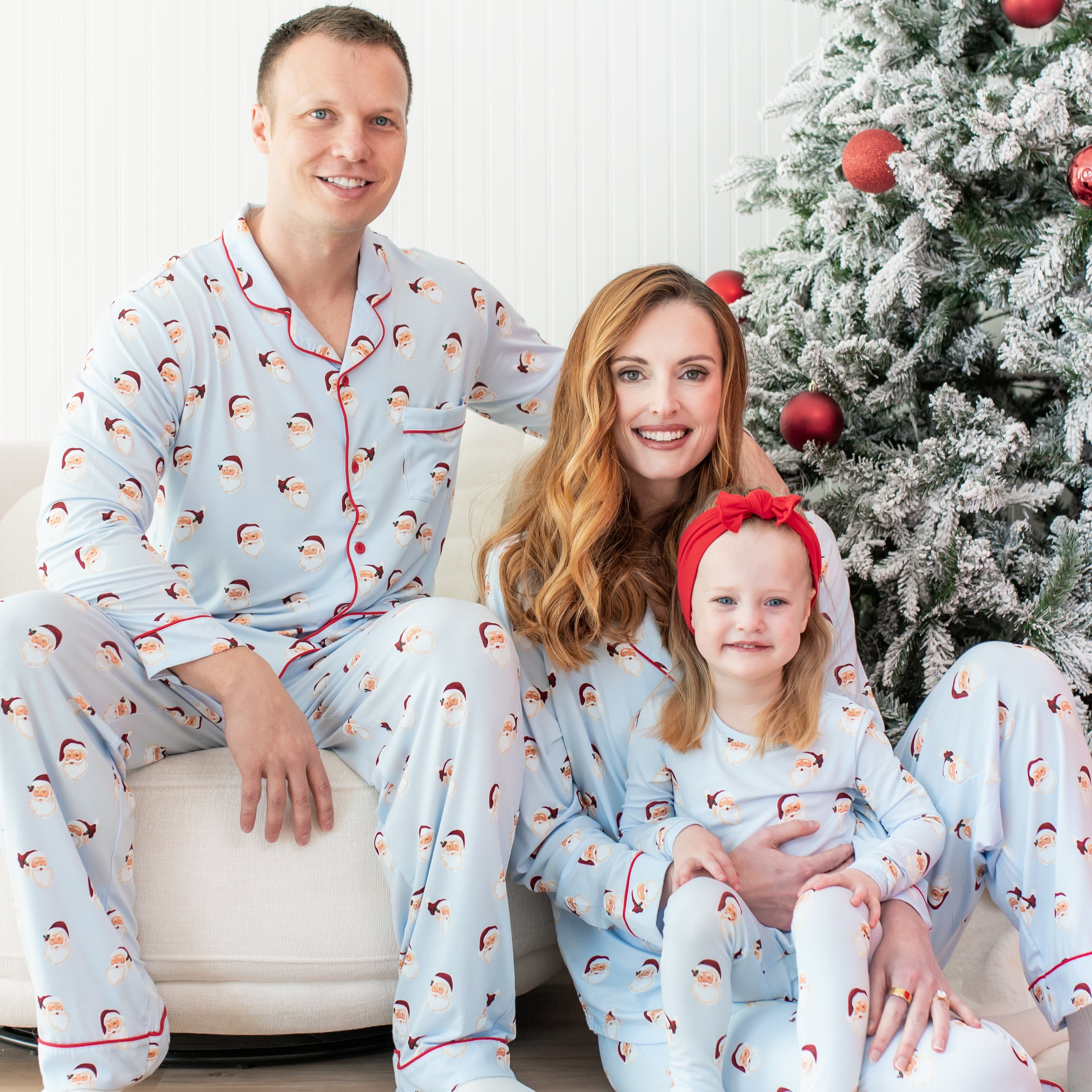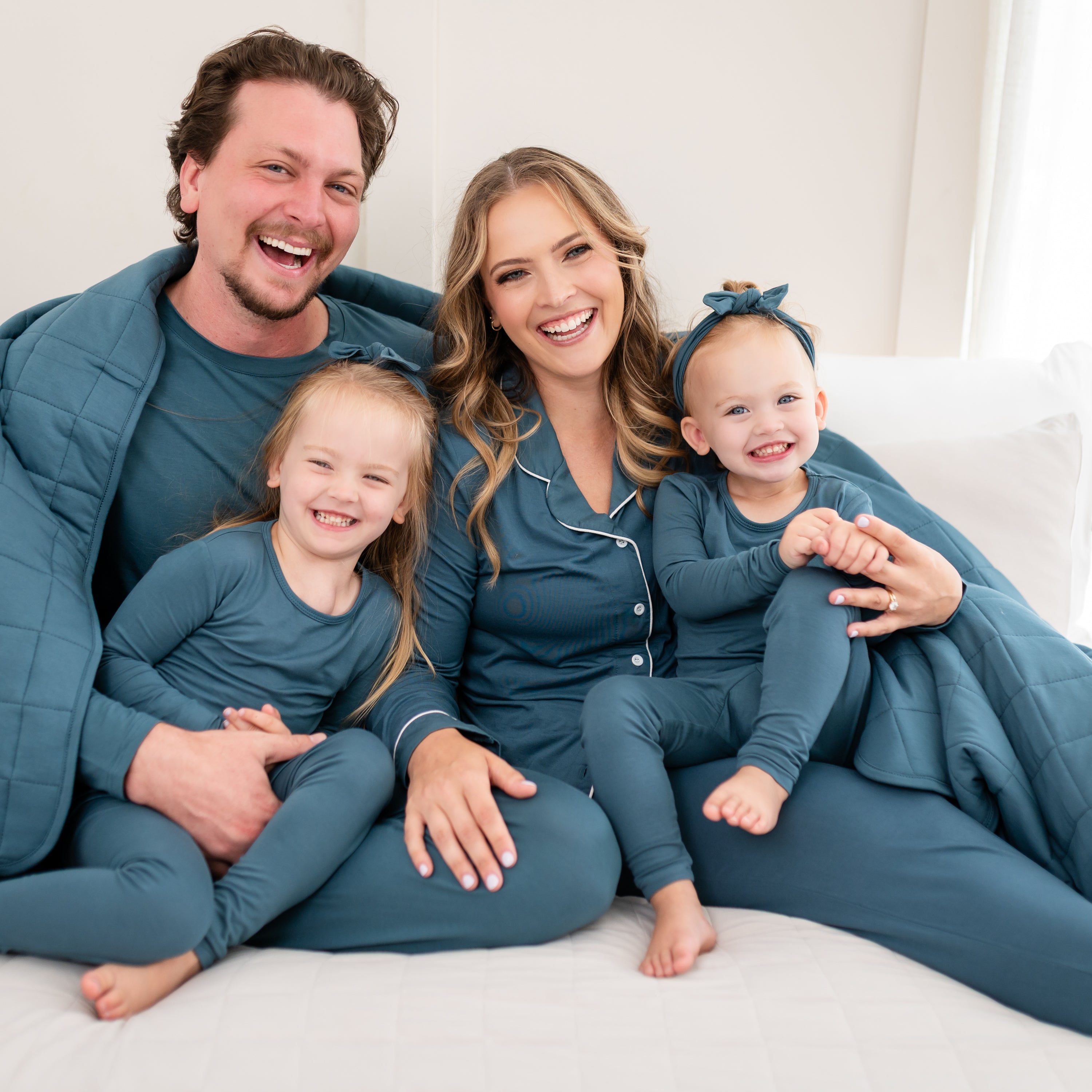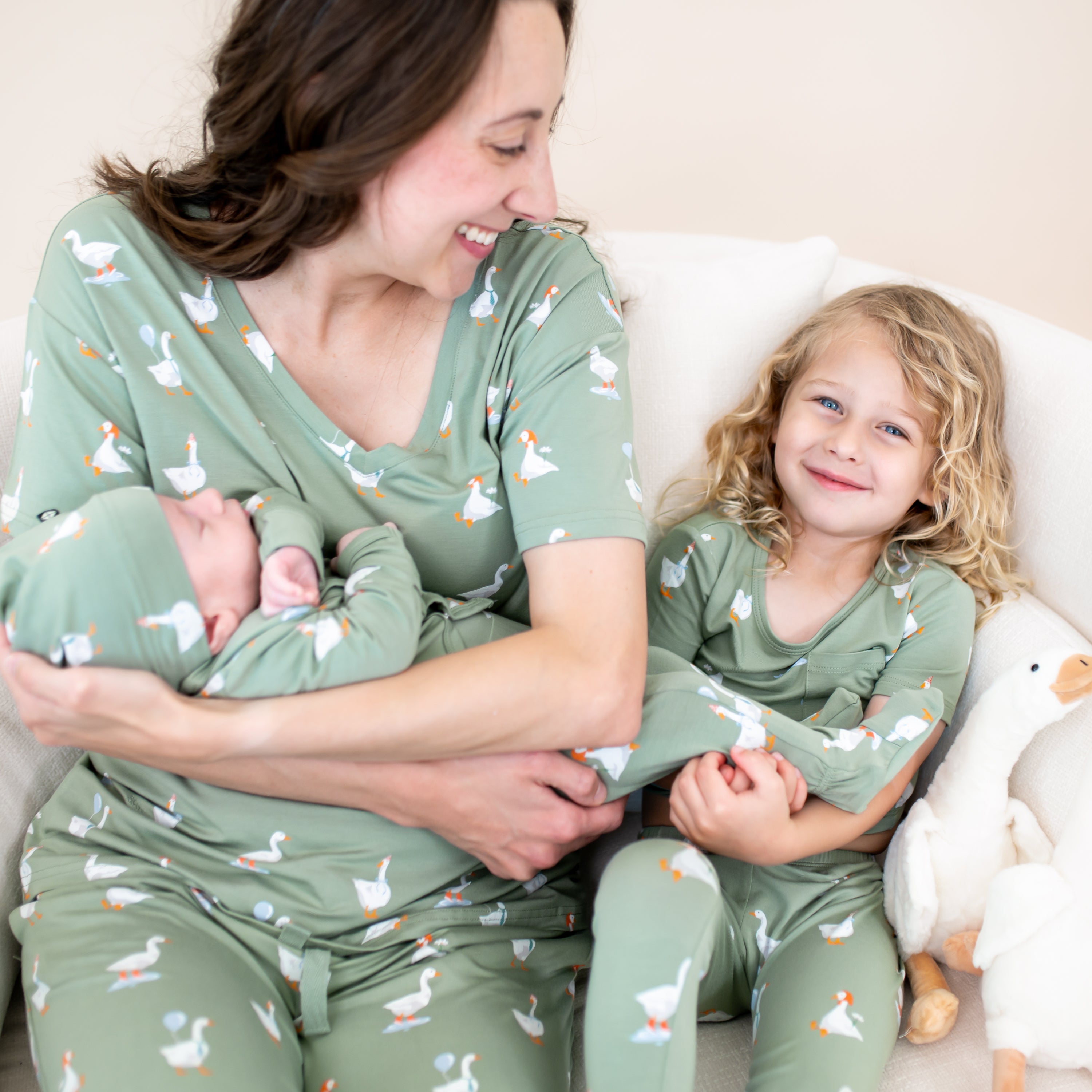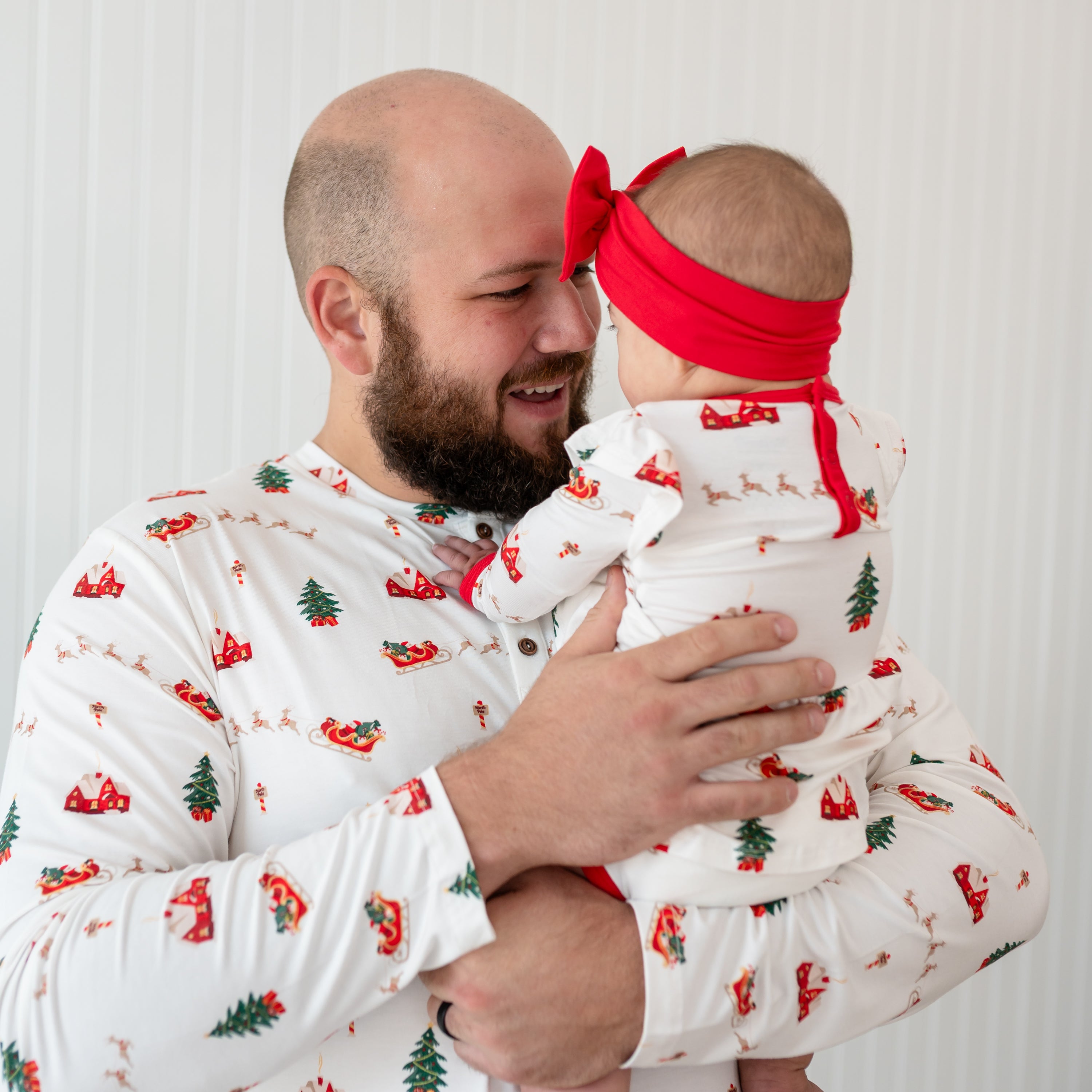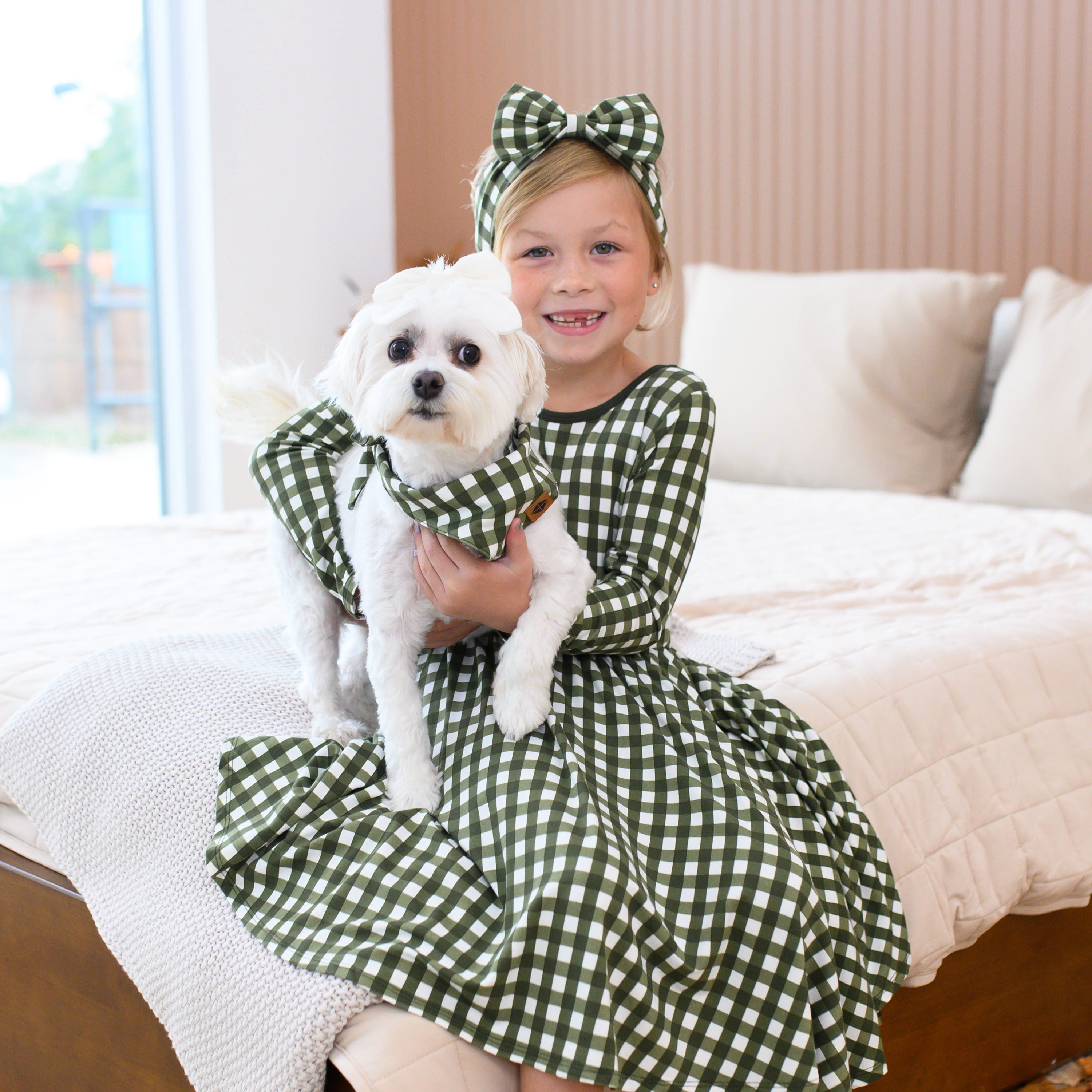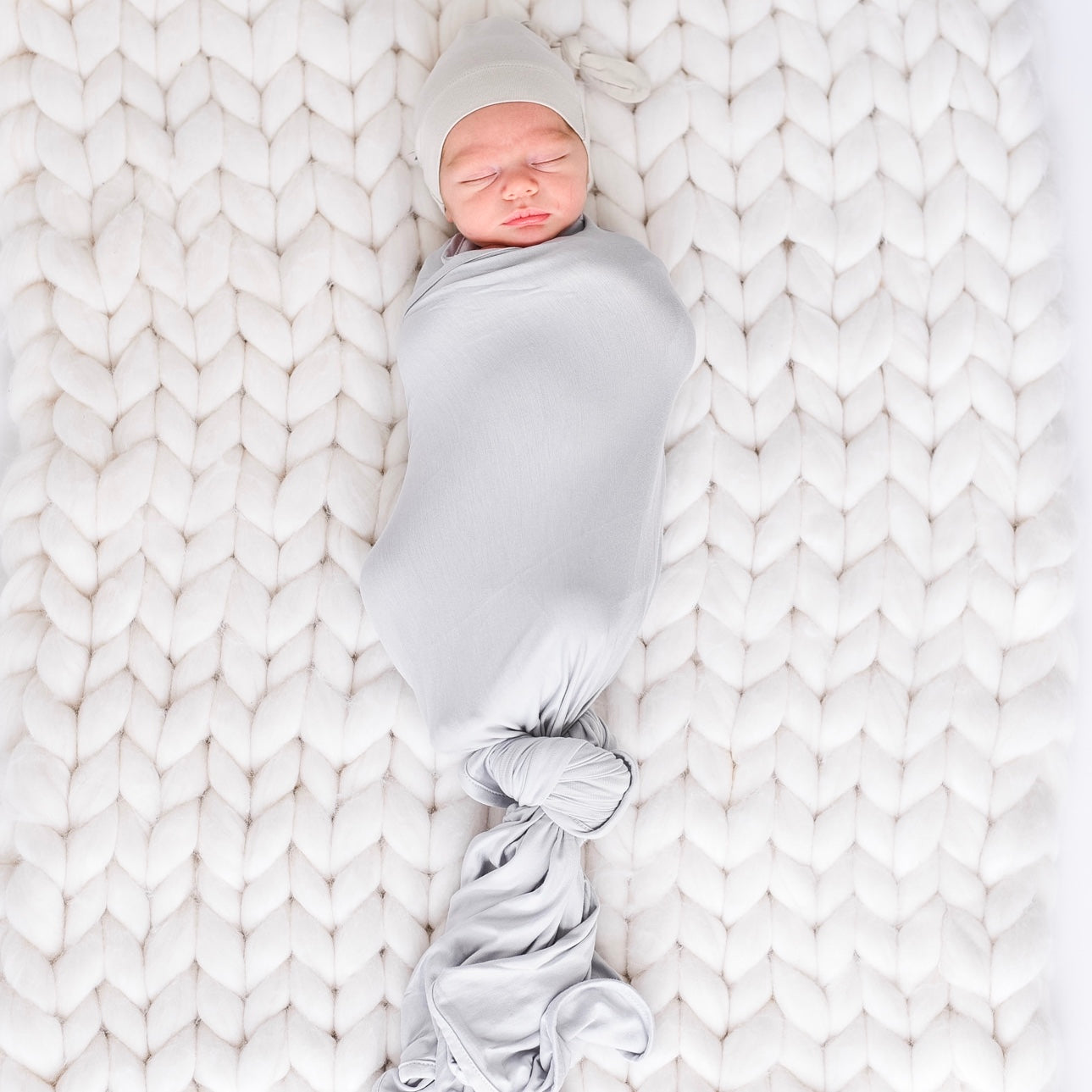Among the laundry list of items you need for a new baby, clothes are easily the most fun to pick out. Socks, which have never been particularly exciting, will suddenly bring happy tears to your eyes when you hold a pair in miniature. Before you’re tempted to purchase every adorable outfit you see (and trust that you will be tempted), think about the logistics of buying newborn baby clothes, so that you can really be prepared for your little one’s arrival.
CONSIDER THE SEASON
The time of year in which your baby will be born is an important factor in choosing clothes. Having a summer baby? You’ll want to stock up on short sleeve bodysuits, but go ahead and throw in a few long sleeve ones in case the temperature unexpectedly drops. Many first-time parents worry about how to dress baby for the weather. The trick? Layers. Babies aren’t able to regulate their body temperature as well as adults, so they’re more susceptible to the cold and heat. Layering means you can easily add or remove clothes to perfectly suit your baby’s needs. Bodysuits make the perfect warm-weather outfit or cold-weather base layer, so make sure you add plenty of them to your registry.
If you don’t already have a few pairs of pants on your list, go ahead and add them. They’re a year-round necessity, regardless of where you live. If you’re expecting your little one in the fall or winter, you’ll want more than a few pairs on hand. Add some socks, and your baby will be as cozy as can be. Remember, layers are the key here. Hats and booties are also a good idea in case it’s really cold out, though it’s not necessary indoors.

In the early days, it will seem like all your baby does is sleep (even if you won’t!), so register for plenty of newborn pajamas. Footed onesie pajamas are particularly great for keeping little toes warm on cold nights. Now, to snap or to zipper? That’s entirely up to you. Snaps mean you won’t have to expose as much skin during diaper changes, but zippered onesies guarantee a fumble-free time in the night.
If you want to make it even easier on yourself, try a sleep gown. Newborns dirty their diapers so frequently, you’ll want to make middle-of-the-night diaper changes as easy and quick as possible. Gowns are a great option for that, but the downside of traditional gowns is that they can ride up around baby’s waist. Kyte BABY bundlers are a redesigned sleep gown that feature a “bundle” to keep little feet tucked in. They’re a sleepwear necessity that offers maximum coziness, while still making diaper changes a breeze.

CONSIDER THE SIZE
Newborn baby means newborn size, right? Not always. The newborn size is designed to fit the average baby at birth—anywhere from 5 to 8lbs and up to 21.5 inches long. You’ll get an idea of how big your baby is measuring toward the end of your prenatal care, so if you’re expecting a 10lb baby, you’ll probably want to skip the newborn clothes and go straight to the 0-3 months size.
Tip: Pack a newborn-size and 0-3 month outfit in your hospital bag. That way, you know your baby will fit comfortably in something for the ride home.
When picking out clothes for your baby, it’s prudent to get an assortment of sizes. Most infants double their weight within the first five months. That’s a lot of growing to do! All babies are different, so while your friend’s baby seems to pack on roll after roll, yours may be on the leaner side (or vice versa). Plan accordingly by filling baby’s closet with various sizes up to 12 months. Even if your little one takes a while to grow into the larger clothes, the first year will be such a whirlwind, you’ll be glad to have them on hand.
Another thing to consider for your newborn is his/her umbilical stump. When the umbilical cord is clipped at birth, the stump is essentially a scab that you don’t want to irritate while it’s healing. Kimono-style bodysuits are an option you may want to invest in to ensure less friction and better air circulation.
CONSIDER THE FABRIC
You’ve heard of “baby soft skin” and it’s a saying for a reason. Your newborn’s soft skin, while the envy of all, is delicate. Be sure to pick out soft baby clothes cut from breathable, pliable fabric like bamboo jersey or bamboo rayon. Bamboo fabric is also invaluable if your baby has eczema because of its temperature-regulating properties and gentleness on skin. Read our blog post on how to get rid of baby eczema for more information.
You’ll find that many wintertime baby clothes are made from fleece. Fleece, though warm, isn’t breathable and does a bad job of regulating body temperature. Fleece clothing for outdoor time during the winter is okay, but skip it for pajamas. The ideal temperature for baby’s room is 68 to 72 degrees, and clothing that is too warm puts baby at risk of overheating. Keep the room at a comfortable temperature (if it’s too warm for you, it’s too warm for your baby), so you can swaddle your newborn without worrying if he’s too warm.

Bodysuits, rompers, and onesies will be your best friends when your newborn seems to soil clothes just as quickly as you put them on. Although little ruffled dresses or tiny button-up shirts for your newborn may look too cute to resist, just remember that when you’re completely exhausted and changing your tenth diaper of the day, you’ll be reaching for that buttery-soft, stretchy, zippered onesie time and time again. It's easy to get lost in the world of newborn baby clothes, but skip the fancy outfits (although one or two for a photo op are always fun to have) and stick with the pieces that are easy for you and comfortable for baby.
In terms of clothing, newborns don’t need much else. Register for the basics and you’ll be set. People love to buy clothes for a new baby, whether parents ask for them or not, so many moms and dads find themselves stuffing drawers with more clothes than they need. Rest assured, you’ll likely pack away items never worn to pass them onto the next expecting mother!
Also, if you’re looking for a complete list of things you need to feel prepared for your newborn read our post, “How to Feel Completely Prepared for a Newborn”. Also, here’s a breakdown of 30 pieces of basics you can stock your closet with to last you the first few weeks:
- 6 footies
- 6 onesies
- 2 hats
- 3 pairs of scratch mittens
- 2 pairs of pants
- 6 pairs of socks
Let us know what’s on your list for baby in the comments below! We’d love to know how you’re preparing for baby!


